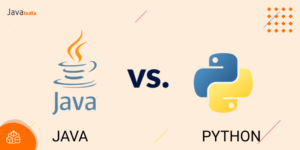9 Pro Tips for Developing Highly Secure Java Applications

Security has been a major talking point – and a fast-evolving domain – in the software industry. However, it’s also true that many developers overlook the security aspects of a software solution. But recent reports suggest we need to be more concerned about ensuring the security of software solutions. While areas like Java development services are vulnerable to security breaches, proper measures can dramatically reduce security risks.
Java is one of the oldest and most widely used development platform and has many in-built security features. The security package of Java is tested rigorously and upgraded periodically. Every new update aims to address vulnerabilities associated with the cloud environment and microservices architectures. Business owners often want to know the security best practices of a company before they decide to hire Java developers from them.
Despite having such comprehensive security measures, it’s always wiser to follow development best practices. If you think about security at every development phase, the product would be secure from most vulnerabilities. In the following paragraphs, we’ll discuss some of the most effective security measures for Java web development.
Tips for Bolstering the Security of Java Applications
1. Keep Your Codes Clean and Strong
Complex and cluttered coding is a breeding ground for security vulnerabilities. Hence it’s always safer and wiser to keep your codes clean and simple without compromising the quality. By adopting practices like avoiding redundancy, you can easily make your codes cleaner and more secure.
Try to disperse as little information in the codes as possible. Hiding implementation details means protecting your codes from an array of vulnerabilities. Leverage Java’s access modifiers. Learn how to how to define different access levels for elements like classes and methods.
Define the smallest possible API and enable components to interact across the smallest areas. This will ensure that even if one area of the solution is breached, other areas will be safe.
2. Don’t Expose Unencrypted Credentials
Encrypt passwords using a one-way cipher before incorporating it into the database. Repeat this step whenever you need to compare it against that value. This measure should be taken while dealing with personally identifiable information. These include credit card details, bank account details, social security number (for countries like the U.S.), etc. This measure becomes especially important while developing an enterprise application in Java.
3. Avoid Serialization in Coding
This could be an easy but highly effective way of ensuring the security of Java. When you use serialization in codes, it creates a remote input and converts the codes into a fully endowed object. Serialization allows a flow of unknown data to become codes in the Java Virtual Machine. Serialization poses profound threats to the security of Java programming. Software giants like Oracle are already planning to remove serialization altogether.
4. Use Authentic and Tested Java Libraries Only
You need to use different kinds of support libraries while writing codes for Java applications. While it’s tempting to use whatever library is most easily accessible, this comes with great risks. Always use Java libraries that are reliable, tried-and-tested, and have a good reputation. This practice applies to the entire spectrum of Java development.
Also Read: Top 10 Java Tools To Consider For Innovative Web App Development
5. Avoid Revealing Implementation via Error Messages
Error messages are a common source of crucial information for hackers. Messages like stack traces can reveal critical information like what kind of technology you’re using and the process of development. Never reveal stack traces to end-users of the application. Other error messages like failed login alert also come under this category of security risks. Offer minimal information in cases of a failed login.
6. Stay Updated With Security Releases
As a developer, you are supposed to stay abreast of every security update. The updates should be immediately applied to your Java runtime environment and Java development kit. Stay alert about what update Oracle releases for Java. It’s often easy to miss an update amid your busy coding schedule. Oracle releases an automated patch update every quarter. However, the patch is available only if you have a paid Java support license.
7. Track Dependency Vulnerabilities
Looking for dependency risks is also important when it comes to secure Java web development. You need to scan the codebase to find such vulnerabilities. The good news is that many tools are available for automatically scanning codebase and dependency vulnerabilities. For instance, you can use the Open Web Application Security Project for improving the security of codes.
Also Read: How to Use Maven – the Dependency Management tool for Java
8.Closely Monitor User Activity
Monitoring the application’s activity is critical to preventing both simple and sophisticated attacks. By using activity monitoring and logging tools you can protect the application from a variety of attacks. These tools keep a close eye on activities of the app and send alerts to the admin if any abnormal activity is observed. The type of such alarming activities includes an unprecedented rise in user activity and attempts to get crucial data. An array of open-source and enterprise-grade monitoring solutions are available for Java development.
9. Be on Your Toes for Denial of Service (DoS) Attacks
Protect your application against runaway resource usage every time you process potentially expensive resources. Oracle has a list of potential threats related to DoS attacks.
While executing operations like unzipping a compressed file, you should carefully observe the exploding resource usage. To ensure security, you should trust only on-disk or in-memory consumption. Additionally, you should also look for unexpected forever loops. If any suspected loop is found, add a guard to ensure the progress of the loop. Finally, always stay updated about new incidents of DoS attacks around the globe.
Conclusion
The software industry has long capitalized on the vastness of Java development services. Java covers a complete spectrum of software development, ranging from mobile apps to enterprise solutions development. Security is a key area for every kind of Java web development and mobile app development. Every Java application can be made highly secure by adhering to dozens of development best practices. Always write clean codes and maintain practices like serialization. Exposing unencrypted credentials makes your application high;y vulnerable, so avoid it. Other security measures include using authentic libraries, updating security releases, and watching out for DoS attacks, among others.
FAQs

Q. What is J2EE development?
J2EE is a platform-independent, Java-based environment for developing and deploying web-based enterprise applications. The platform comprises services, APIs, and protocols. They together provide the functionality for developing multitiered, web-based applications for enterprises.
Q. Can I use Java for web development?
Yes. Java is widely used for developing feature-rich web solutions and software applications alike. Developers around the world use this programming language to write codes for mobile apps, enterprise solutions, and web apps, among others.
Q. What is the security manager in Java?
The Java security manager is an object that defines a security policy for an application. An application can also query its security manager to know what actions are allowed in terms of security.
Q. How is Java used in app development?
The Java programming language processes code into Bytecode, which is then interpreted by a Java Runtime Environment. Java is easy-to-learn and efficient. Hence it’s the first choice of developers around the world. Most Android app development companies prefer Java over other development frameworks.





